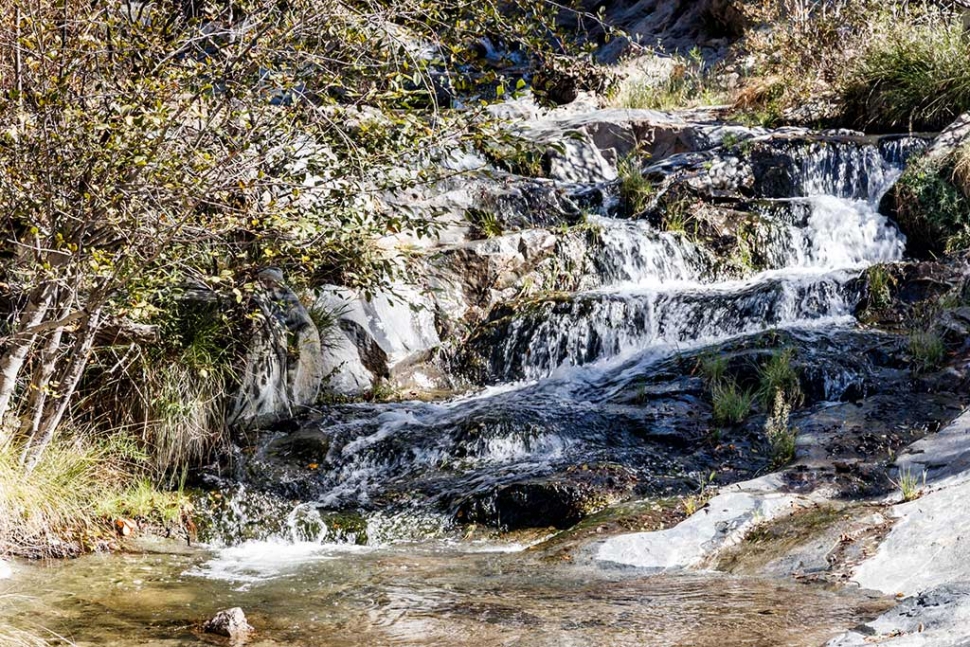|
Photography Know-How
 Photo of the Week "Brush Creek falls, north of Kernville" by Bob Crum. Photo data: ISO 320, Canon EF-S 15-85 lens @63mm, f/11, 1/80 second. By Bob Crum — Wednesday, October 11th, 2017
Overwhelmed!
 Bob Crum Last week I asked y'all about your preferences, desires and expectations. Get more technical or stay the course i.e. relate photography experiences while imparting tech details. Hundreds responded. Awesome! Thanks! Only a few stated they prefer more technical info. Focus stacking... HDR... timelapse etc. However, presenting tech info without illustrations is challenging in a column. But I'll try when logically feasible. Some unmentionables boldly requested that I reveal my mermaid boudoir photography secrets. If you're one of them, best that you don't hold your breath. The majority voted for more of the same. I can do that! Recall last week. I discussed techniques for photographing vibrant fall foliage. To refresh, a polarizing filter reduces – if not eliminates - glare. It also helps to capture the richness of the colors. Time of day to shoot is important. Richly colored leaves are photographed at their best at dawn. Awakening before the rooster crows is often necessary in order to get to a predetermined location at sunrise for that oh-so rewarding photo. Golden hour at sundown also a great time. Location is also important. But how does one determine the best location in relation to the sunrise and at the prime time? Hark! I have the answer: The Photographer's Ephemeris. The Photographer's Ephemeris (TPE) helps plan outdoor photography shoots in natural light. It’s a map-centric sun and moon calculator: see how the light will fall on the land, day or night, for any location on earth. Created for photographers by a photographer in 2009, TPE is a software tool available for desktop and mobile devices to help you plan outdoor photography shoots to ensure the best possible natural light. You'll find it here: http://photoephemeris.com/. The Ephemeris is not without a little learning curve but easily learned with a modicum of determination... i.e... you can do it. I have used the Ephemeris often. For example, to photograph a Brush Creek waterfall north of Kernville. (See photo of the Week) Early morning puts the waterfall in shadow because the sun rises behind it. High noon not the best time. So what is? I can enter the GPS location of the falls into the Ephermeris – or locate it on the Ephermeris map – and follow the arc of the sun throughout the day. Alas, I will discover that I have a 45 minute window as the sun sets in the west but before it dips below the mountains. You see, now I know just how much time I have for a lunch break and a nap and be on scene at exactly the best time. Love it! The TPE can be used for any scene at any GPS location. Most times I do pre-planning at home with Google Earth and TPE. But I also have TPE on my LG V3 cellphone just in case I discover a great new location along the way. Download TPE and learn it. It's very useful. When you head for the hills, expect to move around. A compelling image consists of great composition. Don't just take a snapshot (gasp!) and leave. Move around with a creative eye looking for a different perspective. Sometimes moving only a few feet nails a better composition. When I arrive upon a scene, I'll take a moment to scan it and soak it all in before lifting the camera. This provides an opportunity to determine how to best capture the rapture. I'll take several photos from various spots... at least as many as the terrain permits without falling off a cliff... striving to capture the most compelling photograph. Accept the challenge. Go! Enjoy! Happy photoing! Send your comments, questions or suggestions to bob@fillmoregazette.com |
